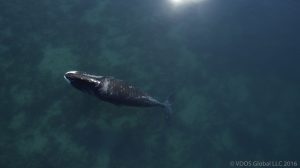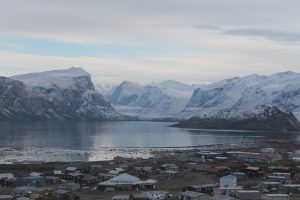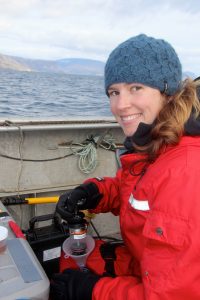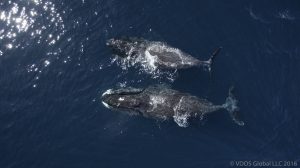How often do marine mammals shed their dead skin? Daily? Annually?
This was the question that marine mammal researcher, Sarah Fortune, asked while studying bowhead whales in Cumberland Sound, Nunavut. Together with her team, Sarah assessed how bowheads shed and lose their dead skin to allow new skin to grow – a process known as molting.
Why care and why now?
Despite the knowledge that marine mammals like dolphins molt continuously, insufficient research existed examining the molting patterns of bowhead whales. Prior to this investigation researchers did not know if bowheads molted continuously or annually. This lack of knowledge resulted in part due to commercial whaling which nearly decimated the bowhead whale population until 1973 when whaling restrictions were implemented. Thanks to successful conservations efforts and advances in the development of drone technology, researchers such as Sarah can bridge this gap in knowledge and study bowhead whales in ways never before possible!
How did they do it?
Fortune attributed the success of her research to recent advancements in drone technology. The use of drones allowed Fortune to observe whales from over a kilometre away. This enabled researchers to gather information on the natural behaviours of bowheads while minimizing any potential influences researchers could have posed to the bowheads. “To the whales,” Fortune described, “it was like a bird flying above them.”
Furthermore, Fortune praised the local Inuit community of Cumberland Sound, Nunavut. Without contributions from this community, Fortune says, her research would have never happened. Sarah Fortune discusses the importance of incorporation of traditional knowledge in the podcast below.
What did they find?
By capturing aerial images and video footage in this way, researchers could then assess the skin conditions of bowheads and gain insight into the bowheads’ molting behaviours. Along with her team, Fortune observed that bowhead whales facilitate molting through a process known as rock-nosing which is most common in summer months. When rock-nosing, these 75-100 tonne bowheads rub their large bodies against boulders in warm, shallow, bays with low salt concentrations. To bowheads, boulders are essentially massive pumice stones! Through rock-nosing, bowhead whales are able to shed skin damaged from sun exposure and infections. By maintaining healthy skin, Fortune described, bowheads may better regulate their body temperature. Fortune elaborates on her research and shares video images of the bowheads gathered from the drones in the video included below.
What next?
In the future, Fortune hopes to study bowheads in greater detail to pinpoint when molting starts. Sarah Fortune emphasized the importance of working with the government to protect bowhead whales in the future, “The next steps to take here are to designate critical habitats for bowhead whales and to make sure we will not disturb their behaviors, such as rock rubbing. This would entail working with the Canadian government.”
https://www.youtube.com/watch?time_continue=11&v=J9IU6g1MTqw
Thank you to VDOS Global LLC for providing the images and videos used.
Maddy, Jenny, Misam, and Dion





